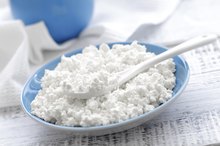What does fact checked mean?
At Healthfully, we strive to deliver objective content that is accurate and up-to-date. Our team periodically reviews articles in order to ensure content quality. The sources cited below consist of evidence from peer-reviewed journals, prominent medical organizations, academic associations, and government data.
The information contained on this site is for informational purposes only, and should not be used as a substitute for the advice of a professional health care provider. Please check with the appropriate physician regarding health questions and concerns. Although we strive to deliver accurate and up-to-date information, no guarantee to that effect is made.
How Many Grams of Sugar Per Day Can a Diabetic Have?
It may surprise you to know that with the exception of sugary beverages, the recommended sugar intake guidelines are the same for people with and without diabetes. Sugar is a form of carbohydrate your body uses for energy, and compared to other food components, carbs have the greatest impact on your blood glucose level. Learn about the types of sugar in your diet and what to choose to best manage your condition.
The Deal With Sugar
Carbohydrates consist of sugars, starches and fiber, and regardless of the type, your body converts them to blood glucose. In the past, the dietary approach to diabetes focused on eliminating sugar because experts thought it caused blood glucose to rise too high. However, subsequent research found that the total amount, rather than the type of carb you eat, has more of an impact on your blood sugar. For this reason, the current approach is to control the total amount of carbs, regardless of the type, at each meal.
- Carbohydrates consist of sugars, starches and fiber, and regardless of the type, your body converts them to blood glucose.
- However, subsequent research found that the total amount, rather than the type of carb you eat, has more of an impact on your blood sugar.
Natural Versus Added Sugar
Negative Side Effects of Maltitol
Learn More
While the goal is to focus on the total amount of carbs you eat, this doesn't give you a green card to eat excess sugar. These foods contain naturally occurring sugars, and as whole foods, they provide useful nutrients such as:
- protein
- calcium
- vitamin D
- minerals
On the other hand, sugar that is added to foods has no nutritional value and is typically added to nutritionally imbalanced foods. Natural sugar has a place in your diet. For example, the sugar in fruit provides a quick source of energy to replenish you after exercise.
- While the goal is to focus on the total amount of carbs you eat, this doesn't give you a green card to eat excess sugar.
- These foods contain naturally occurring sugars, and as whole foods, they provide useful nutrients such as: * protein
* calcium
* vitamin D
* minerals On the other hand, sugar that is added to foods has no nutritional value and is typically added to nutritionally imbalanced foods.
Added Sugar Guidelines
The recommended amount of added sugar for people with or without diabetes is 6 teaspoons for women and 9 teaspoons for men, according to the American Heart Association 12 12. This amount equals 100 to 150 calories, or 25 and 37.5 grams. The American Diabetes Association also recommends that people with diabetes limit or avoid sugary beverages because they're heavy in calories, increasing the risk of weight gain, and are high in rapidly absorbed sugars, which negatively affect triglycerides -- a type of fat in your blood 2 2. Because having diabetes increases the risk of heart disease, it's best to reduce other risk factors such as weight gain and high cholesterol.
Controlling Carbohydrates and Added Sugars
Can a Diabetic Eat Cottage Cheese?
Learn More
Counting carbohydrates is a way to control the amount of carbs you eat each day. Having 45 to 60 grams of carbs per meal works well for most people, according to the ADA. To include sweets in your meal, compensate so you stay within the 45- to 60-gram range -- or the range recommended by your dietitian. The goal is to keep your meal balanced. To best control your diabetes, save desserts and other sweets for special occasions.
- Counting carbohydrates is a way to control the amount of carbs you eat each day.
- To include sweets in your meal, compensate so you stay within the 45- to 60-gram range -- or the range recommended by your dietitian.
Related Articles
References
- American Diabetes Association: Nutrition Therapy Recommendations for the Management of Adults With Diabetes
- American Heart Association: Added Sugars
- American Heart Association. Added sugars. Updated April 17, 2018.
- World Health Organization. Guidelines: Sugars intake for adults and children.
- American Diabetes Association, Bantle JP, Wylie-Rosett J, et al. Nutrition recommendations and interventions for diabetes: A position statement of the american diabetes association [published correction appears in Diabetes Care. 2010 Aug;33(8):1911]. Diabetes Care. 2008;31 Suppl 1:S61–S78. doi:10.2337/dc08-S061
- Powell ES, Smith-Taillie LP, Popkin BM. Added sugars intake across the distribution of US children and adult consumers: 1977-2012. J Acad Nutr Diet. 2016;116(10):1543–1550.e1. doi:10.1016/j.jand.2016.06.003
Writer Bio
Janet Renee is a clinical dietitian with a special interest in weight management, sports dietetics, medical nutrition therapy and diet trends. She earned her Master of Science in nutrition from the University of Chicago and has contributed to health and wellness magazines, including Prevention, Self, Shape and Cooking Light.









